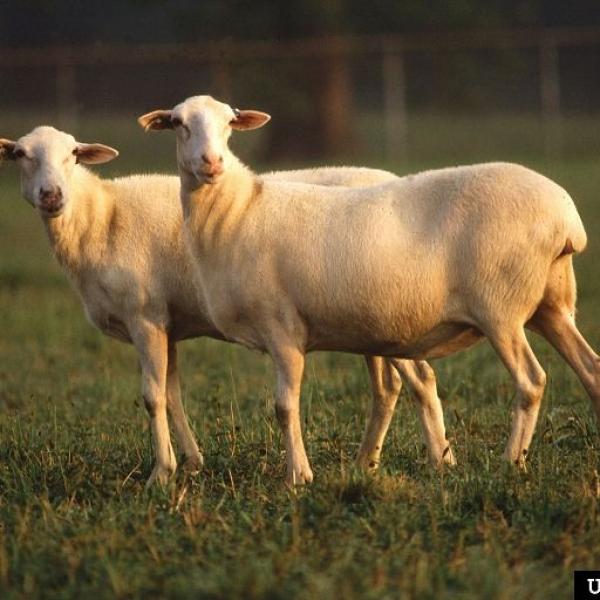
News Source
"Years ago, President Woodrow Wilson grazed sheep on the White House lawn. The wool was sold to raise money for the Red Cross during World War I.
Today there are other reasons to pasture animals on public property in towns and villages – and two Vermont towns experimenting with the practice are seeing positive results.
In Randolph, just at the edge of the village, Jenn Colby’s sheep graze on a hillside. There’s nothing unusual about the scene, but the property doesn’t belong to Colby. It’s town land.
Colby lives nearby and pasturing her sheep here is both convenient for her and helpful to the town, which doesn’t have to keep the property mowed.
“We’re saving the town money and they’re saving us, too,” says Colby, who believes there are many other towns with land that could be used for grazing animals.
Colby, who is pasture program coordinator with the UVM Center For Sustainable Agriculture, says pasture land like these town-owned fields surrounding the municipal water supply is easy to lose and difficult to reclaim.
“What we see here are fairly early successional species that are coming in. Goldenrod is coming in, bedstraw is coming. There are some poplars and suckers that are coming up from the ground as well,” she says.
“That’s with the town mowing it once a year. For places that aren’t even brush hogged or touched over a period of two or three or four years, it’s a lot more work to bring it back.”
There’s another important reason the town is welcoming Colby’s sheep. They help control invasive plants, which are an increasing problem.
“Wild chervil and buckthorn are two big ones on that particular property,” says Sid McLam, who chairs the Randolph Conservation Commission.
He says annual mowing done by the town wasn’t effective in controlling invasive species – and hiring someone to deal with them would cost the town money.
Colby approached the commission last year and convinced them her animals could more effectively control the invasives.
“She brought pictures and documentation of what she had done and it was very clear what a difference sheep grazing could make,” he says.
In Putney, there’s another example of using grazing animals on land open to the public.
The Putney Mountain summit is a popular hiking and picnicking destination owned by a local non-profit, Putney Mt. Association.
Claire Wilson with the association says buckthorn was gradually taking over the summit.
“Every year we would do as much as we could in terms of cutting it back,” he says, but the buckthorn kept spreading.
The association tried applying a chemical herbicide to a small area, but Wilson says it scorched everything, and the expense was prohibitive. She says using chemicals was also at odds with the conservation goals for the land.
Then last year the association used grant money and donations to hire an Amherst, Massachusetts business called Goat Girls, which hires out their animals to help control invasives.
This year sheep from a local farmer are grazing on Putney Mountain.
“The board in the beginning was very, 'Oh, well, if you can raise the money, we’ll try it.' Now it's gung-ho about this and we’re getting contributions from people that we’ve never had contributions from before,” says Wilson.
She hasn’t heard about any other Vermont communities using grazing animals on public land. Neither has Jenn Colby, who says she’d love to see sheep grazing on town greens and school lawns, providing educational opportunities for children and yet another local food source.
“To be able to donate some of the meat raised to the food shelf, get it into the school system. I think it could be an amazing opportunity to do that,” says Colby. "I would love to see sheep grazing on [the median of] the interstate," Colby says with a laugh.
Ironically, while grazing animals in parks and other public spaces hasn’t caught on in Vermont, it has in many urban areas. Cities from Boston to San Francisco to Washington, D.C., are joining a sustainable landscaping movement that embraces using grazing animals."
Article Credit: Steve Zind, VPR
Photo Credit: P. Rech, "Sheep", CC by 3.0 US (http://www.weedimages.org/browse/detail.cfm?imgnum=1320055)